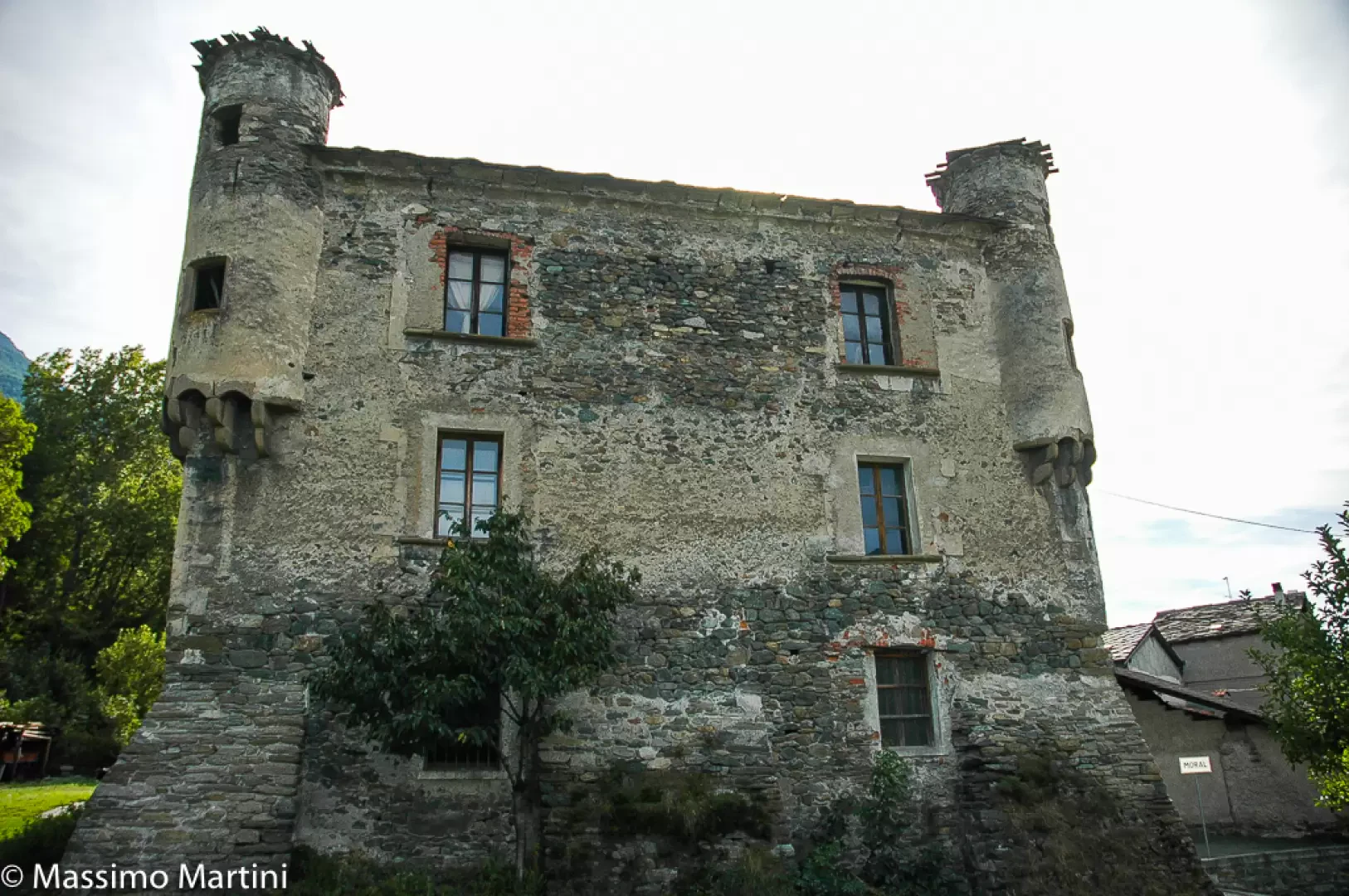Saint-Marcel Castle

Introduction
The Castle of Saint-Marcel, also known as Château de Saint-Marcel, is located in the hamlet of Surpian, within the municipality of Saint-Marcel, in the autonomous region of Valle d'Aosta, Italy. This fascinating château stands on a plateau at the base of the dejection cone of the Saint-Marcel torrent, in a strategic position dominating the routes along the valley floor and those leading to the southern valley, historically known for its soapstone mining and the presence of iron, copper and manganese mines, exploited since the Middle Ages.
.Description
The building, which probably dates back to the 14th century, represents a typical example of a late-medieval 'monobloc castle'. The original structure had a square plan, characteristic of fortified residences of the time. Later, the Lords of Fénis added a western body with a rectangular plan to house a flat. The castle is dominated by a square tower to the north-west, while two turrets mounted on brackets, similar to those of Ussel Castle, protrude from the north and east corners. The interior rooms were adorned with wooden ceilings, and the remains of large fireplaces are still visible, testifying to the ancient splendour of the rooms.
Over the centuries, the castle suffered progressive neglect that compromised its structure, leading to the complete loss of the roof. In 2011, the Aosta Valley Region, owner of the building, launched a restoration campaign aimed at securing the entire complex. The planned interventions included the circling of the eastern body and the tower, with particular attention to the partially collapsed southern side. At the same time, archaeological investigations were undertaken to acquire the knowledge necessary for the functional recovery of the structure.
The history of the Castle of Saint-Marcel is closely linked to the powerful Challant family. The manor, in its present form, was built by James of Challant-Aymavilles, son of Louis of Challant, between the end of the 15th and the beginning of the 16th century, on the remains of an earlier fortified house. The fief of Saint-Marcel, initially belonging to Ebalo Magno, Viscount of Aosta, passed through various branches of the Challant family and other noble families over the centuries. In the 17th century, the castle was seized by Baron Paolo Emanuele di San Secondo as security for his future wife's dowry and was later owned by Carlo Emanuele di San Secondo. In the 18th century, it became the property of the 'Saint-Marcel Mining Explorers' Society'. In the 20th century, it became municipal property, falling into complete ruin.
The castle is not currently open to the public due to ongoing restoration work. However, during the summer of 2011, free guided tours of the excavation and restoration sites were organised, offering the public the opportunity to discover this fascinating historical monument up close. Despite its precarious condition, the Saint-Marcel Castle remains an important testimony to the cultural heritage of the Aosta Valley, representing a significant example of rural fortified architecture and a symbol of local history.